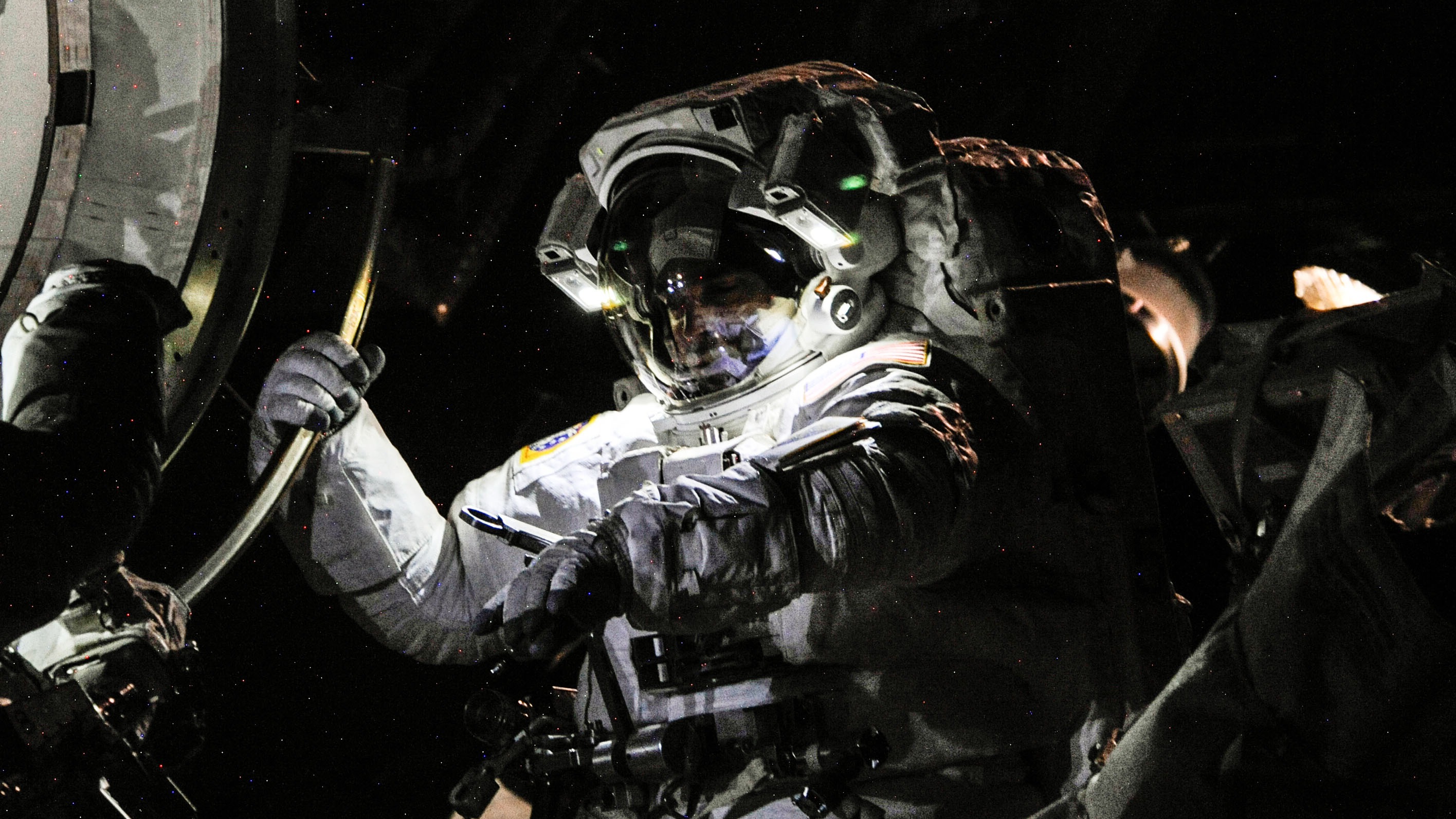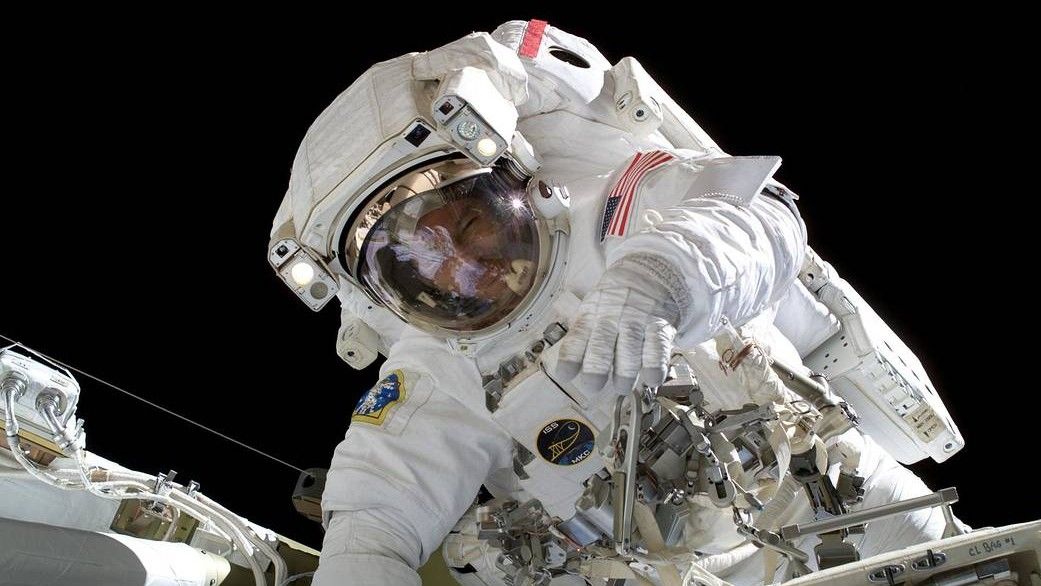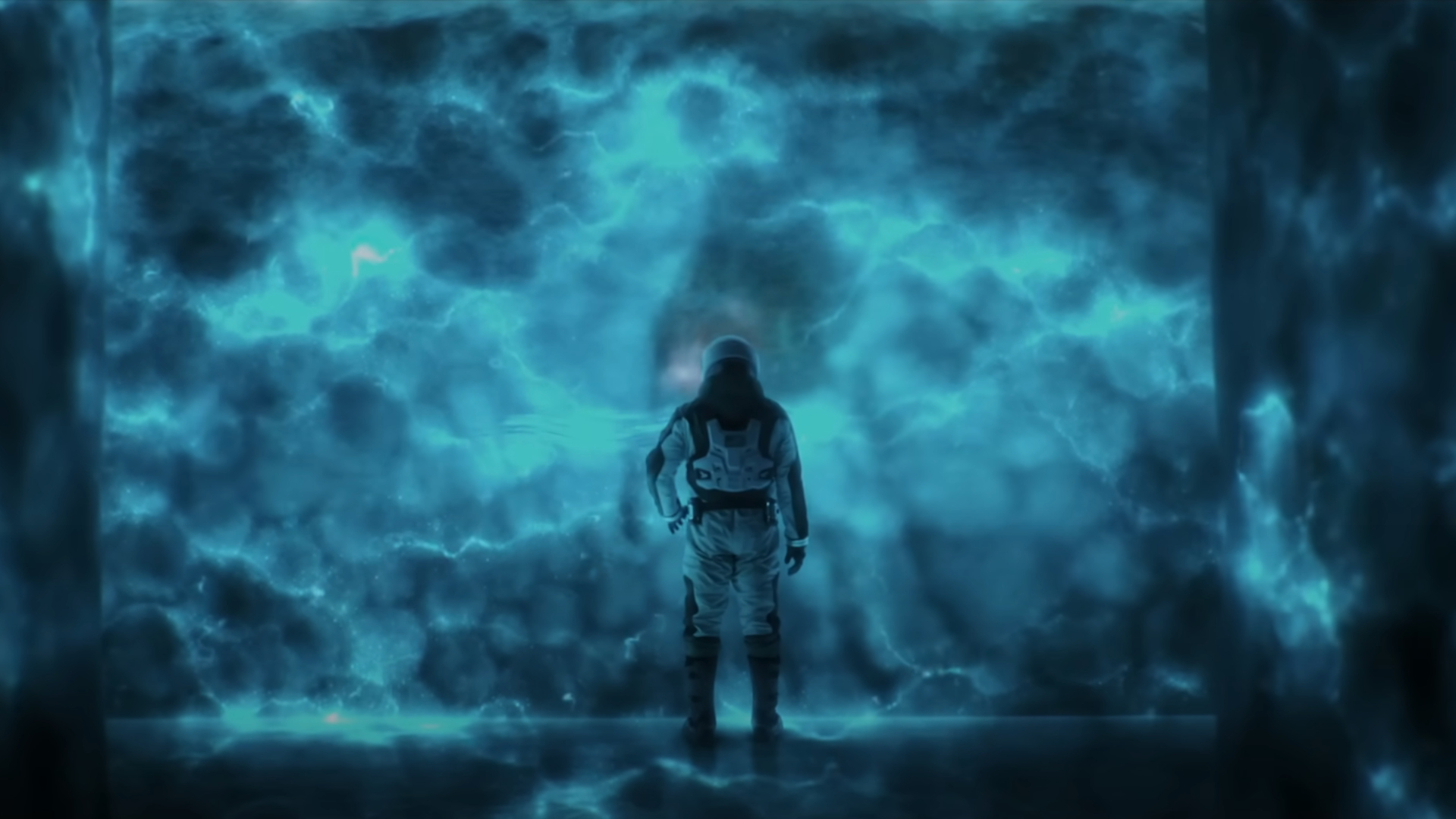NASA delays ISS spacewalks indefinitely to investigate spacesuit coolant leak
"It's not time-critical or urgent."

NASA says its next spacewalk will be delayed indefinitely until engineers understand more about what caused a coolant leak on June 24.
Tracy Dyson, a NASA astronaut, had a brief spacesuit leak a month ago while still in the hatch of the International Space Station (ISS). She and Mike Barrett had just opened the door for a 6.5-hour spacewalk for maintenance activities, when showers of ice particles erupted from a spacesuit connection to the ISS. The spacewalk was suspended, but the astronauts were never in any danger, NASA has emphasized.
"That spacewalk ended early because of a water leak in the suit's service and cooling umbilical; that's the site that's connected to ISS," station program manager Dana Weigel, of NASA, told reporters in a teleconference Wednesday (July 17). (Astronaut spacesuits stay connected to ISS life support systems via that umbilical until just before they exit the hatch.)
"We're still taking a look at the cause of the water leak, and what we want to do to recover," Weigel added. "We'll go look for the next opportunity for where we want to do the spacewalk. It's not time-critical or urgent, and so we'll find the best, logical place to put it."
NASA's extravehicular mobility unit (EMU) spacesuit used for spacewalks has design that dates to the 1970s, and was first used during space shuttle mission STS-6 in April 1983. The EMU has a long and reliable flight heritage: It's the spacesuit that was used for all space shuttle spacewalks, it handily allowed crews to service the Hubble Space Telescope, and it helped astronauts build the ISS as well.
The EMU has swappable parts that can be replaced and serviced. That said, in recent years, it has been prone periodically to coolant leaks for different reasons. NASA suspended spacewalks for seven months in March 2022 after water was discovered in a spacesuit helmet, for example. And a July 2013 incident required an investigation report and additional months of spacewalk suspension, after Italian astronaut Luca Parmitano's helmet filled with water while he was spacewalking.
NASA's and private industry's newer generations of spacesuits are emphasizing better flexibility with updated materials, alongside improved sizing to accommodate all genders. The EMU is biased towards larger and male sizes, due to being designed in an era when most astronauts were male recruits from the then nearly single-gender armed forces. In June, Collins Aerospace backed out of its contract to design newer ISS suits, saying its schedule for development "would not support the space station's schedule and NASA's mission objectives."
Breaking space news, the latest updates on rocket launches, skywatching events and more!
Related: ISS astronauts conduct 'spacewalk review' after spacesuit coolant leak

The cause of the latest leak is not yet known, but the onboard Expedition 71 astronauts have done several hours of troubleshooting in recent weeks and NASA is reviewing that information.
NASA had originally planned a trio of spacewalks in June and July, but shortened that to two after a June 13 spacewalk was suspended due to "spacesuit discomfort." The second of the revised series was originally expected for July 2, but as Weigel indicated July 17, spacewalk needs in general will be examined in the coming months.
Spacewalking is among the "dynamic activities" that the ISS hosts, Weigel noted in the same conference. Such activities happen roughly every week or 10 days, she added, when including "something like a visiting vehicle docking or undocking, [or] spacewalk, [or] robotics." (The ISS has several robotic arms and devices that perform maintenance and science work, often under control from the ground.)
Schedules in space are always in flux, but the past few weeks have been especially uncertain for ISS planning.
The Boeing Starliner spacecraft's mission to the ISS for its first astronaut test flight was initially delayed from May 6 due to a helium leak, which NASA and Boeing extensively analyzed and troubleshooted before approving a launch. (Developmental efforts such as this often have uncertainty as the spacecraft and systems are new to launching humans.)
After arriving at ISS on June 6, the 10-day Crew Flight Test mission was eventually extended indefinitely due to thruster issues that delayed docking. Starliner remains rated to leave ISS in case of emergency, but engineers are analyzing ground tests performed last week to better analyze the performance of the Starliner system before it is authorized for six-month operational missions as soon as 2025.
NASA's portion of the Expedition 71 crew arrived in March as a part of SpaceX's Crew-8, riding the SpaceX Falcon 9 rocket to space. Crew-9 was supposed to arrive in mid-August. While that timing is still on NASA's manifest, all launches of Falcon 9 were suspended last week after a problem on the second stage of a Starlink satellite launch.
SpaceX has petitioned the Federal Aviation Administration to allow launches to proceed, but NASA says it wants to do its own review before authorizing SpaceX to launch astronauts or cargo to the ISS. (Different variants of Falcon 9 are used for astronauts and satellites.)
Join our Space Forums to keep talking space on the latest missions, night sky and more! And if you have a news tip, correction or comment, let us know at: community@space.com.

Elizabeth Howell (she/her), Ph.D., was a staff writer in the spaceflight channel between 2022 and 2024 specializing in Canadian space news. She was contributing writer for Space.com for 10 years from 2012 to 2024. Elizabeth's reporting includes multiple exclusives with the White House, leading world coverage about a lost-and-found space tomato on the International Space Station, witnessing five human spaceflight launches on two continents, flying parabolic, working inside a spacesuit, and participating in a simulated Mars mission. Her latest book, "Why Am I Taller?" (ECW Press, 2022) is co-written with astronaut Dave Williams.
